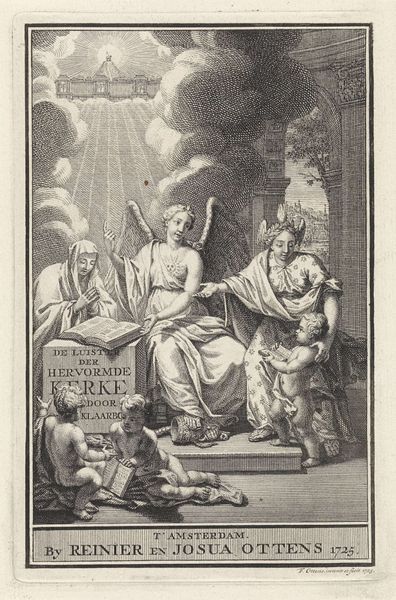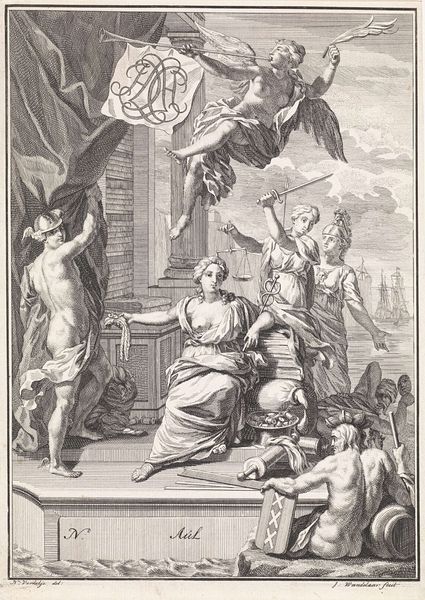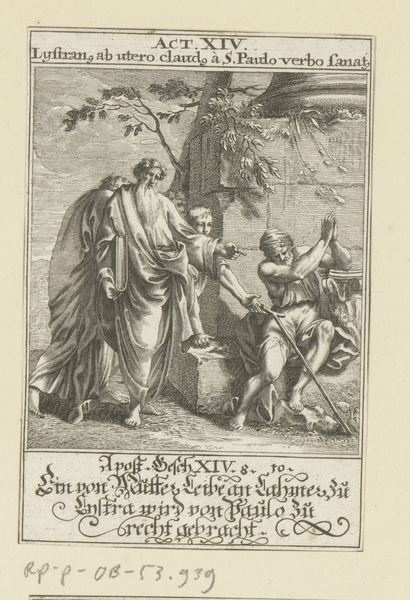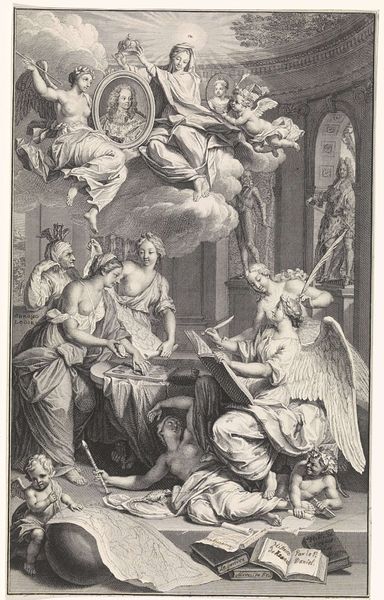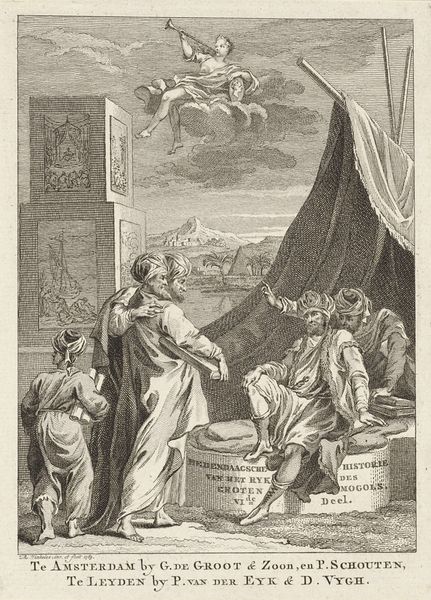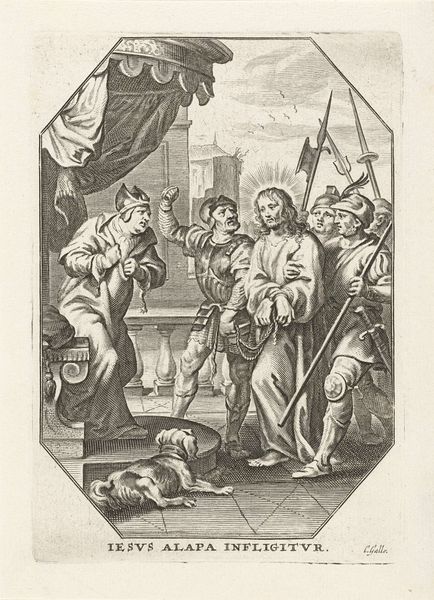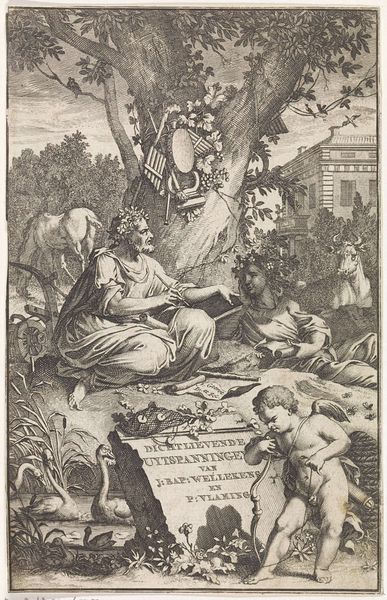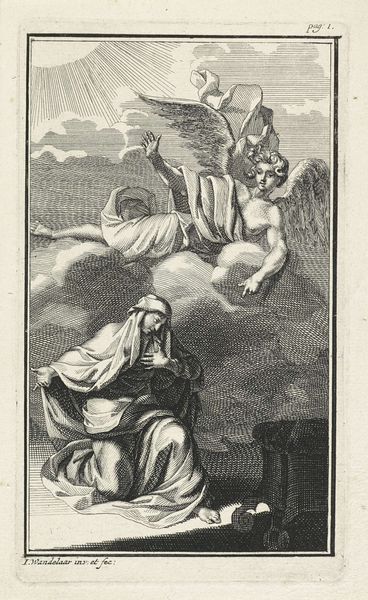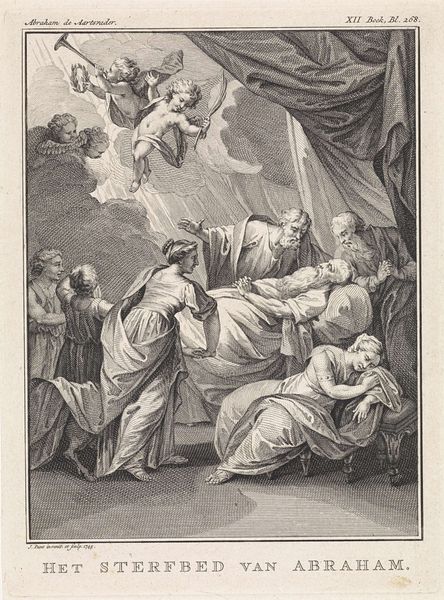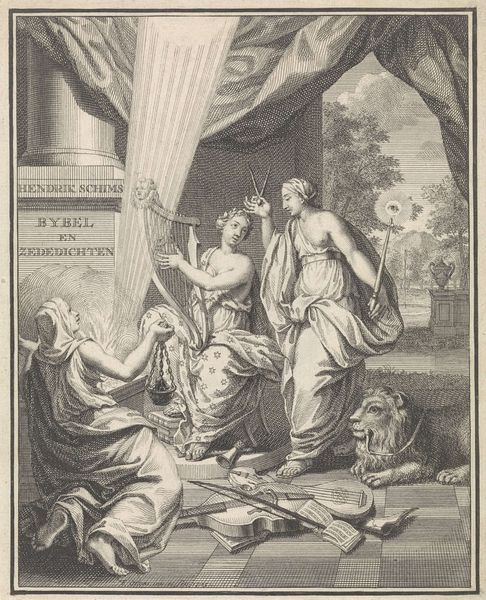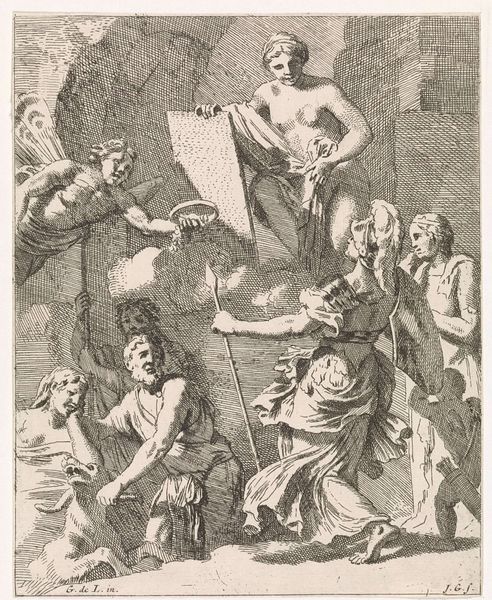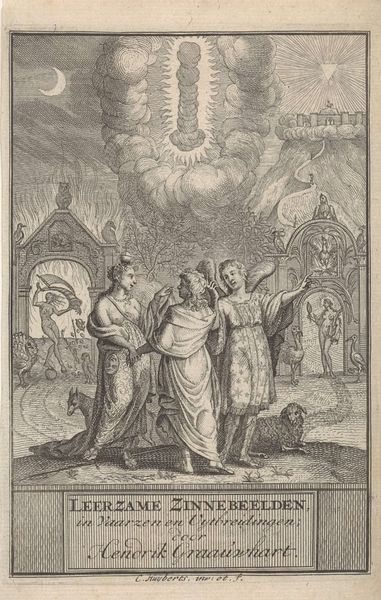
engraving
#
portrait
#
allegory
#
baroque
#
pen drawing
#
old engraving style
#
figuration
#
history-painting
#
engraving
Dimensions: height 137 mm, width 84 mm
Copyright: Rijks Museum: Open Domain
Curator: Here we have Pieter Yver’s 1736 engraving, "Rede en Deugd brengen Amor bij Geluk," or, as the inscription tells us in French, “la Raison et la Vertu conduisent l'Amour à la Felicité”--Reason and Virtue lead Love to Happiness. It’s a Baroque allegory held in the collection of the Rijksmuseum. Editor: My first impression is how intricately rendered this engraving is—there’s such fine detail. Yet, it has a kind of somber mood for a piece supposedly about happiness. I find the classical figures elegant, but emotionally distant. Curator: That perceived distance is partly a product of the period's aesthetic conventions; Baroque allegory favors idealised forms and symbolic language. The composition itself is meticulously arranged, and divided into clear registers with very close tonal values. The symmetry creates balance while drawing your eye around the scene and towards the upper reaches of the frame where the allegorical figure of Happiness is enthroned, complete with her attribute of the sphere, and inscription of her supposed domains. Editor: But look at who is being ‘led’ towards happiness--the figure of Amor! Is it just me, or does his placement between Reason and Virtue, next to the symbolic Lion, seem almost... constrained? This visual arrangement suggests that Love, unchecked, is seen as needing guidance. A product of the 18th century fear of the emotions overpowering intellect perhaps? What's more the title panel itself--'The Illustrious French Women'-- suggests an inherent contradiction when it sits so ambiguously atop an explicitly allegorical image which appears unconnected to this theme. Curator: Intriguing points. I interpret the presence of Reason and Virtue as offering context. The lines of the architecture create a rigid, framed composition. What impact, I wonder, does the artist achieve through such sharp geometry. Editor: For me, it raises questions about the narratives being constructed. Reason and Virtue, typically regarded as ‘positive’ attributes, are perhaps here being used to advocate a conservative positioning of emotion—an instrumentalising, maybe even colonialising of love itself. Where’s the agency in the Cupid character within this equation? Even Happiness appears almost as a disembodied spectator. Is happiness being given, or achieved, here? Curator: Such perspectives greatly enrich our reading. To consider how a composition, created in such fine detail, speaks across social contexts. Editor: Absolutely. Engaging with artwork on multiple levels is vital—understanding the aesthetic alongside the embedded cultural and historical perspectives.
Comments
No comments
Be the first to comment and join the conversation on the ultimate creative platform.
